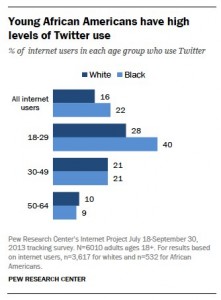Pew Report: African Americans and Technology Use
Topics
 Earlier this week, the Pew Internet and American Life ProjectExit Disclaimer released a new reportExit Disclaimer on African Americans and technology use based on a survey of American adults. This report is the first in a series of reports looking at technology use among different demographic groups across the United States.
Earlier this week, the Pew Internet and American Life ProjectExit Disclaimer released a new reportExit Disclaimer on African Americans and technology use based on a survey of American adults. This report is the first in a series of reports looking at technology use among different demographic groups across the United States.
We asked Meico M. Whitlock, Senior Manager of Communications at the National Alliance of State and Territorial AIDS Directors (NASTAD), to weigh in on how this report can benefit the community. "Despite persistent digital divides, this report underscores the fact that African Americans (especially young people) are participating in online social networks and using mobile devices in large numbers, " Meico told us." This presents a tremendous opportunity to think differently about how we effectively integrate digital technology into strategies for ending the HIV and hepatitis epidemics, especially in communities disproportionately impacted by these diseases. This work has to be done at all levels — Federal, State, and Local — if we want to maximize this opportunity."
Here are a few highlights from the report and how they can be useful for the HIV community.
- The majority of African American internet users are on social networking sites. 73% of African American internet users-and 96% of those aged 18-29-use a social networking site.
- Twitter presence is high for young African Americans. 40% of 18-29 year old African Americans who say they use the internet say that they use twitter, which is 12 percentage points higher than the comparable figure for young Whites.
- There is a varying “black/white digital divide” across platforms. While African Americans use the internet less than whites (87% whites, 80% blacks), there is little divide when it comes to mobile platforms.
- Cell Phone vs. Smartphone usage: 92% of black adults are cell phone owners, and 56% own a smartphone. When it comes to smartphones, 72% of all African Americans—and 98% of those between the ages of 18 and 29—have either a broadband connection or a smartphone.
For the HIV community this report has implications for integrating the use of new media to reach diverse communities. We all need to assess whether our communication strategies include a presence on social networking sites to better engage people. Finally, because of the high prevalence of smartphones use; we want our program information accessible and easy to read on all devices. This includes making sure your website can be viewed on mobile devices and mobile applications are available and compatible with a variety of devices.What does this report mean for you? Please share your comments on how you are using technology to reach your audiences.